Monday August 12, Bratislava
The fourth member of our fellowship, Gianna, is arriving this morning by plane, first to Vienna and then by bus to Bratislava (about 1 hour). The bus station is just two blocks away, so we pick our “package” and start exploring the city.
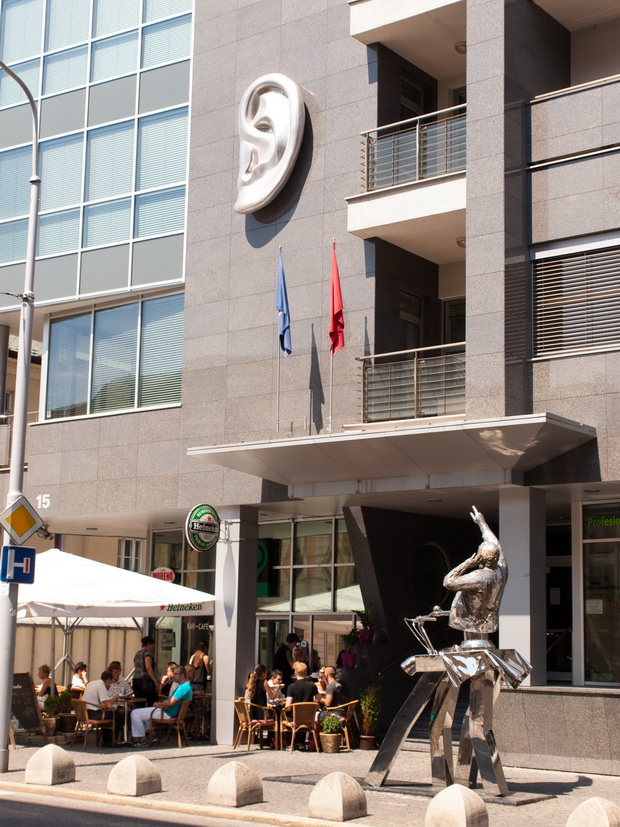
The first thing we see, is a statue of the comedian Julius Satinsky riding a bicycle and showing a big ear on a wall over him. From what Ι read on the internet, the building was the base of the former Czechoslovakia secret police. Not 100% sure, because the reports I have found for this statue are just a few.
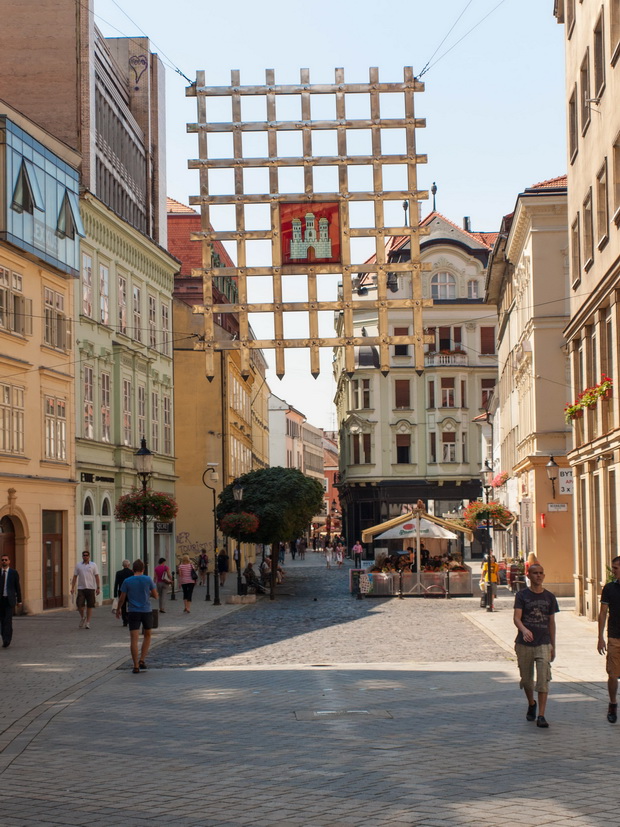
Few blocks away, we enter the old town and we come across the Archbishop Palace. It was built between 1788-1781 and it is now the Mayor’s residence.
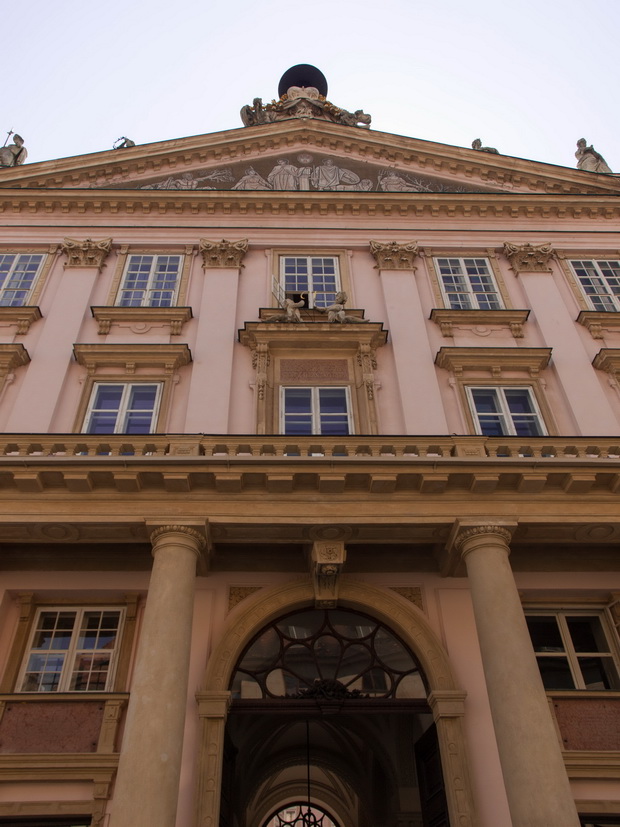
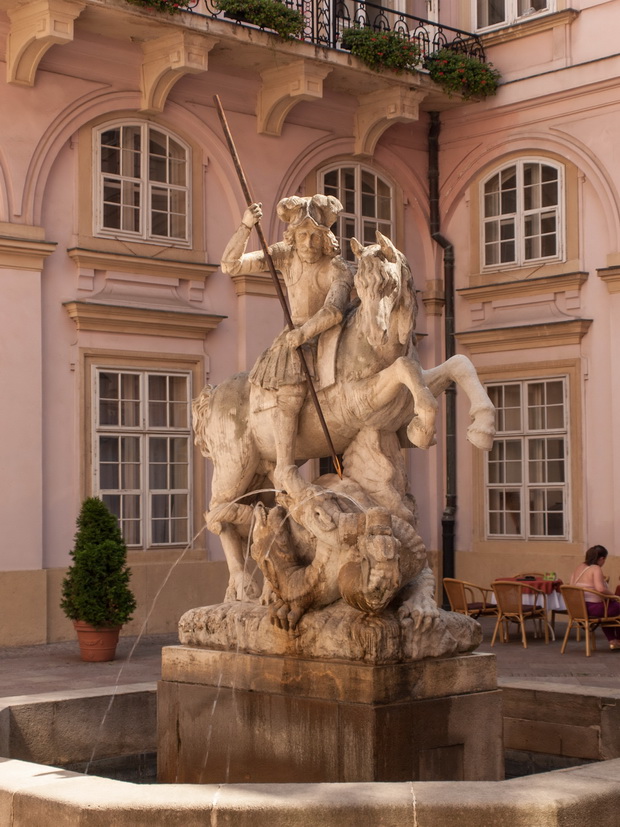
In the center of the palace there is a statue of Knight St. George fighting with the dragon
Right next to the palace lies the Hlavne Namestie, ie the central city square.
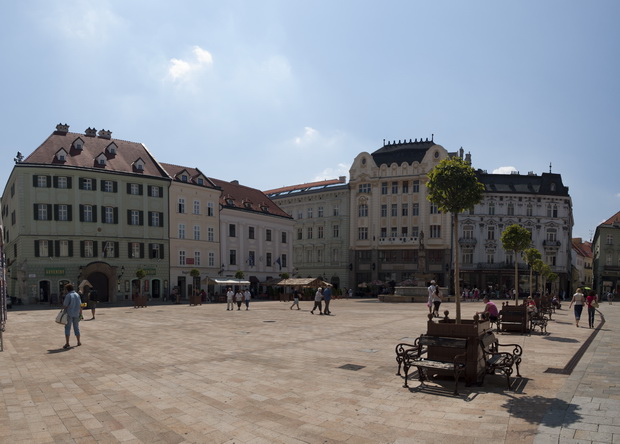
The main attractions are the Old Town Hall and the Roland Fountain. The fountain was constructed in 1572 by the King of the Hungarian Empire, Maximilian the 2nd, and it is considered as one of the most important monuments of the city.
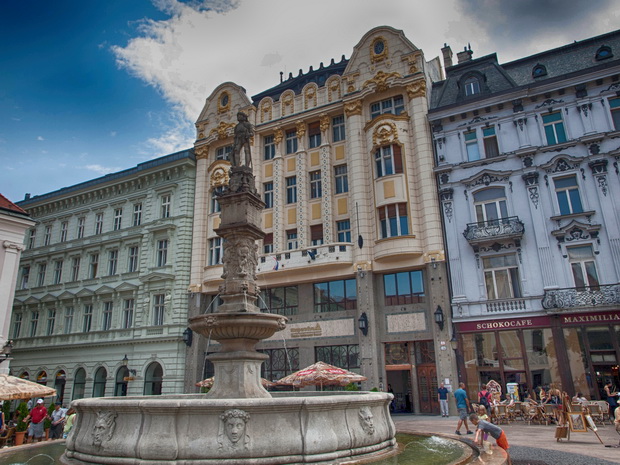
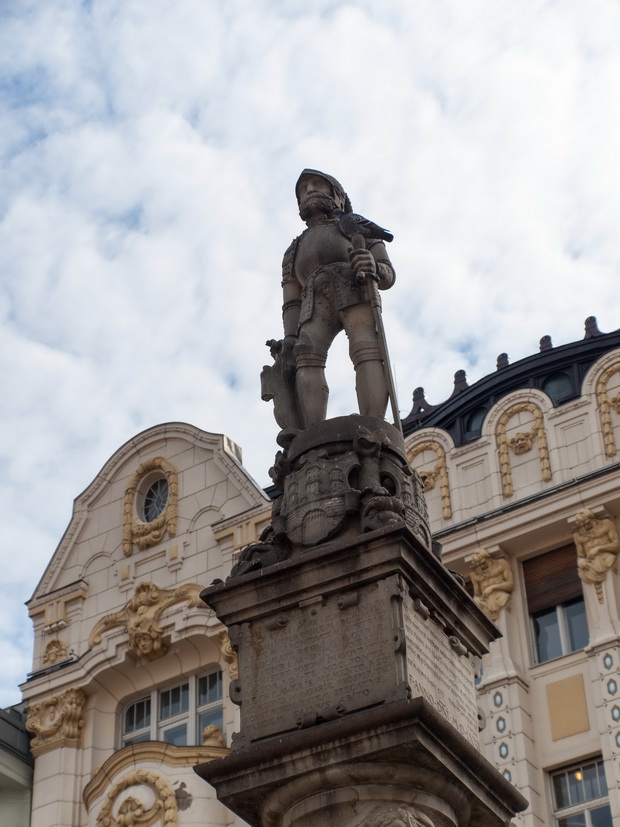
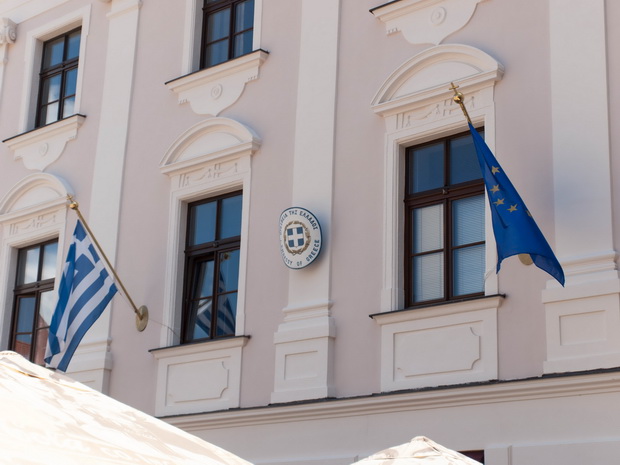
Greek Embasy is also located there
We continue walking until we meet Cumil, a statue symbol of the city.
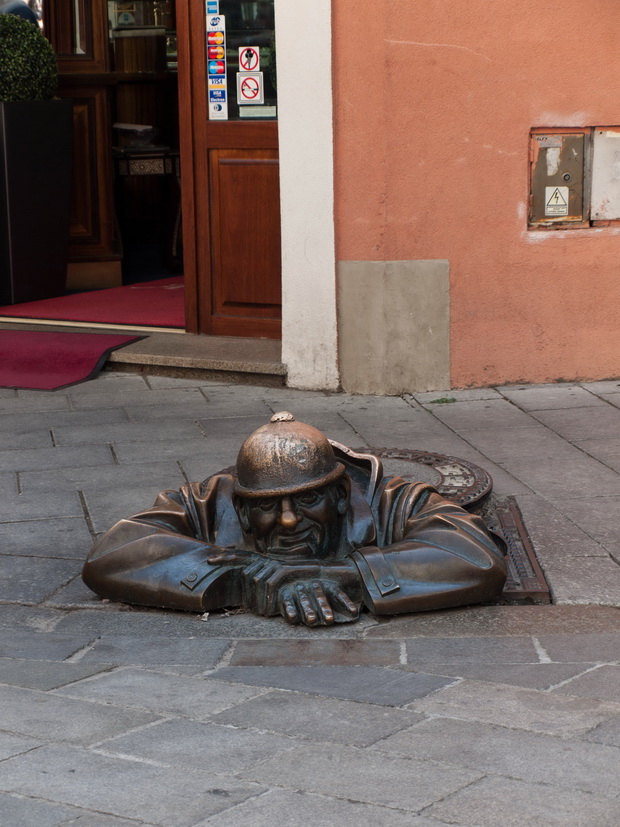
After the statue had lost its head twice due to inattentive drivers, it was decided to place a unique road sign next to it.
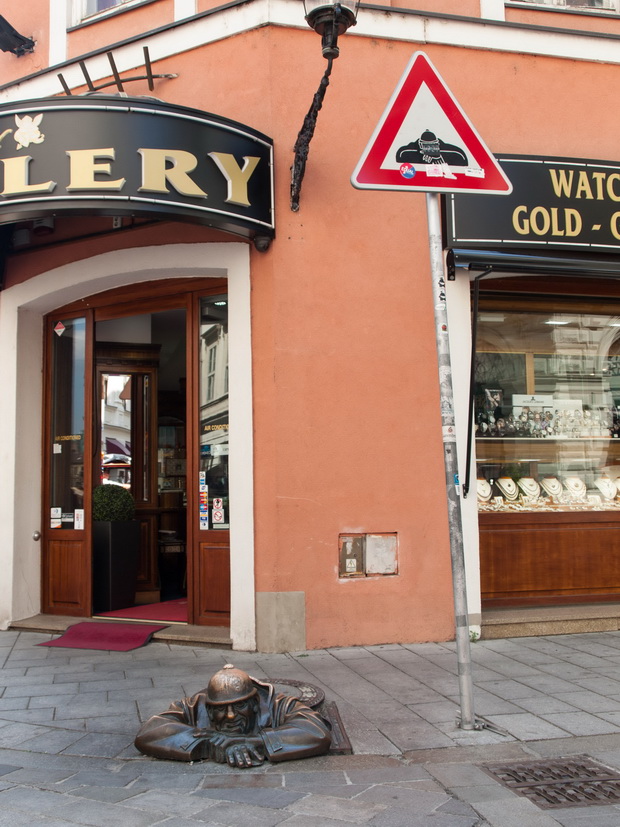
Cumil, is not the only “strange” statue in Bratislava. Just a bit further north of it lies the statue of “beautiful Ignaz” (Schoener Naci). He was a well known figure in the early 20th century.
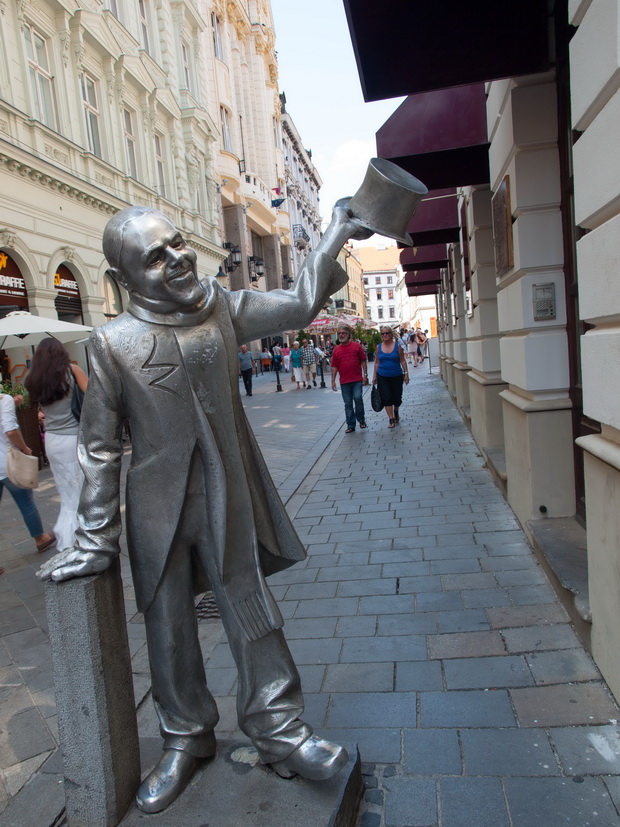
The poor and mentally ill man, paraded the streets of Bratislava in old, but elegant attire (a velvet frock), greeting passers by with his top-hat and bowing courteously to the ladies.
There are two more statues in the surrounding areas. Paparazzi, who photographs the people passing outside Paparazzi restaurant and the French soldier (who looks like Napoleon) resting at a bench at the main square. Unfortunately the restaurant was closed on April 30, 2013 (if we understood correctly the handwritten sign on the door) and the statue was removed from its position and we didn’t see the soldier anywhere… Just for the record, two Images “borrowed” from the internet :
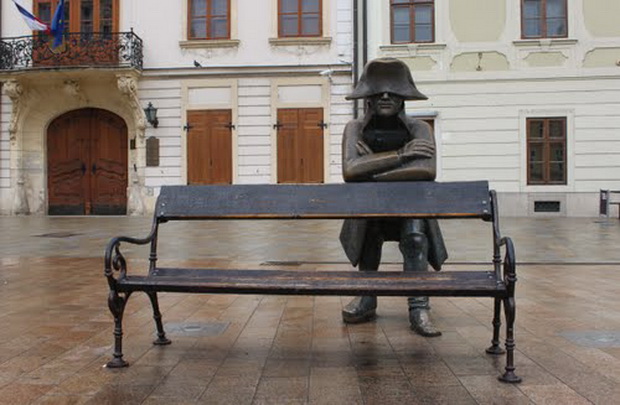
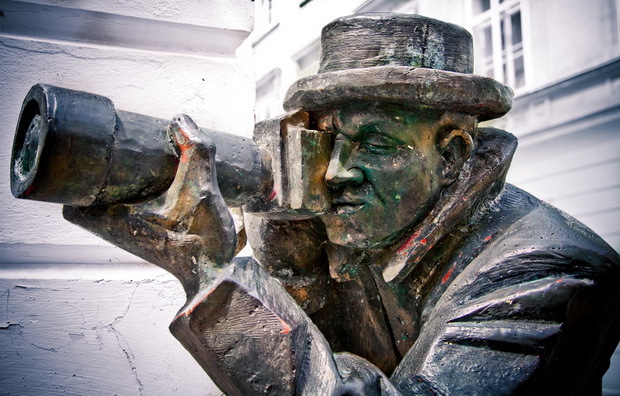
At the foot of the hill where the castle stands, there is the church of St. Martin. It was officially opened in 1452 but the constructions continued for two more centuries. Since 1563 the church has been used for the coronation of 11 kings of Hungary and has also housed the premiere of Beethoven, Missa Solemnis. The tower of the cathedral is 85 meters high and was originally part of the medieval fortifications. At the top, there is a great golden crown, weighing 300 kg, placed in 1847 to commemorate the significance of the temple.
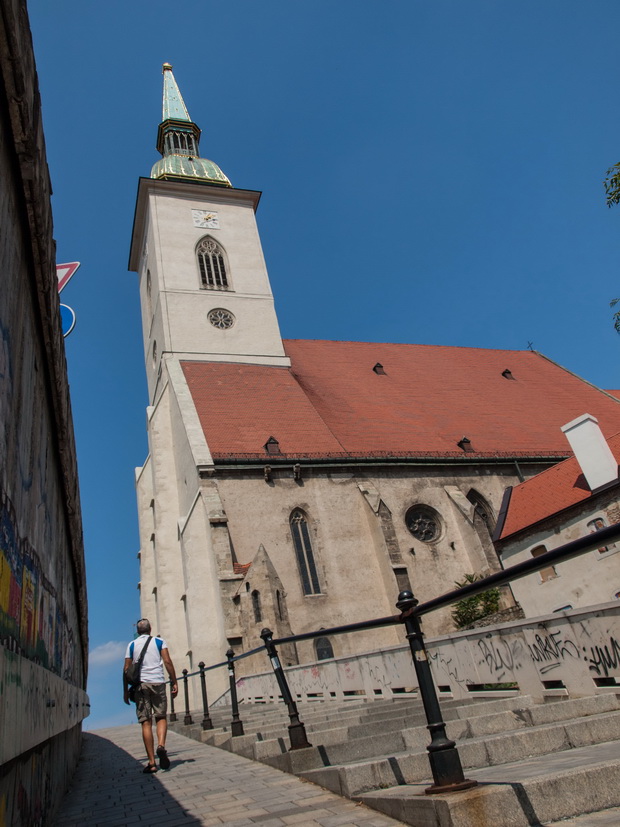
Next stop at the castle, which is located on the hill above the town. It was originally constructed in the 10th century and over the years it received lots of modifications until the late 18th century where it was turned into a ruin. In 1953 it was rebuilt following the Baroque architecture style.
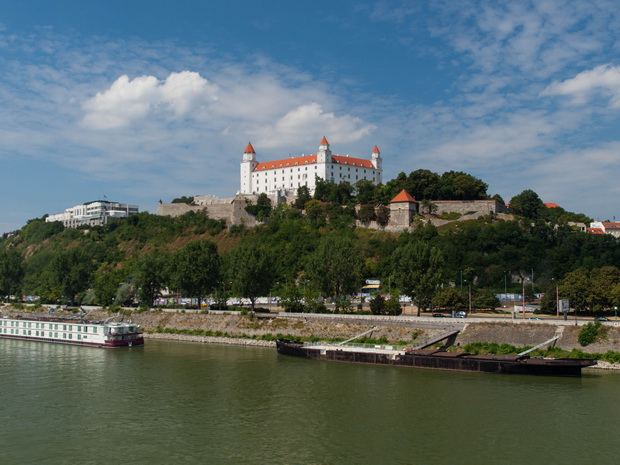
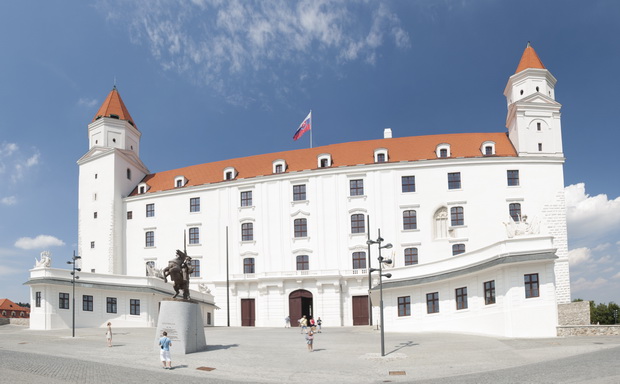
Unfortunately the castle is closed on Mondays. But there were several free places worth a visit to see.
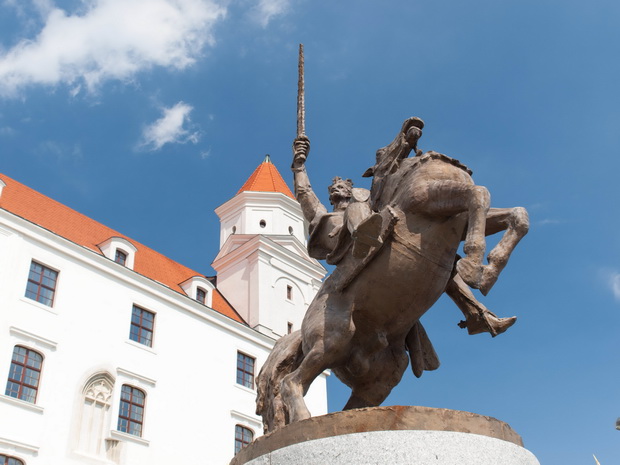
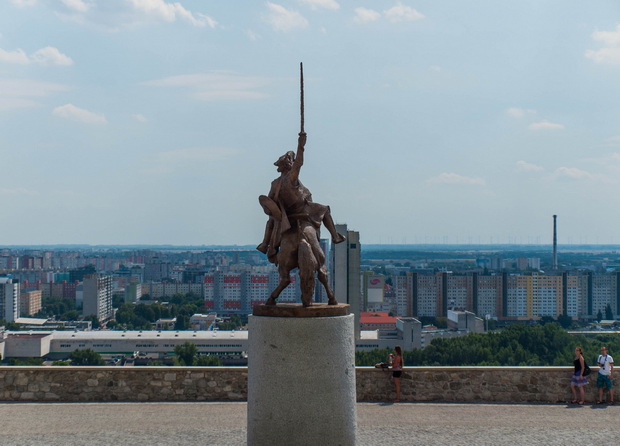
We continue north of the castle and we make a stop at the Grassalkovich palace. It was built in the 18th century as a summer residence of Count Antal Grassalkovich. Nowadays it is used as the residence of the President of Slovakia.
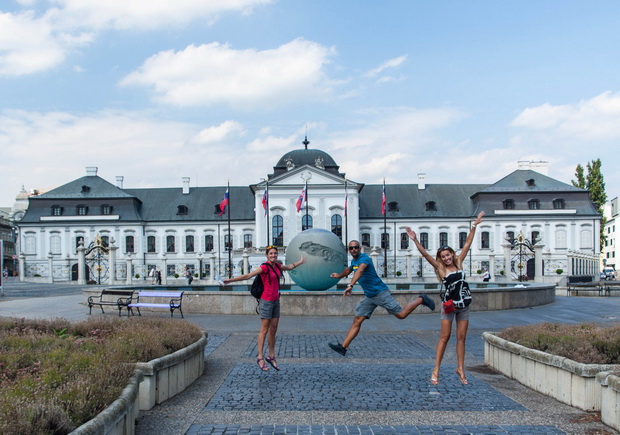
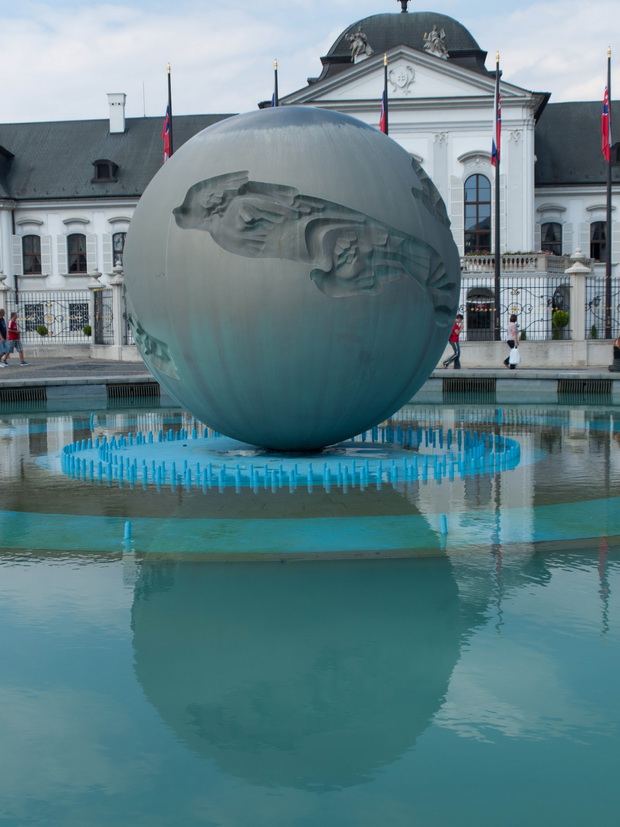
We head back to the old town, passing through Michael’s Gate, which is the only gate that has survived from the medieval fortification.
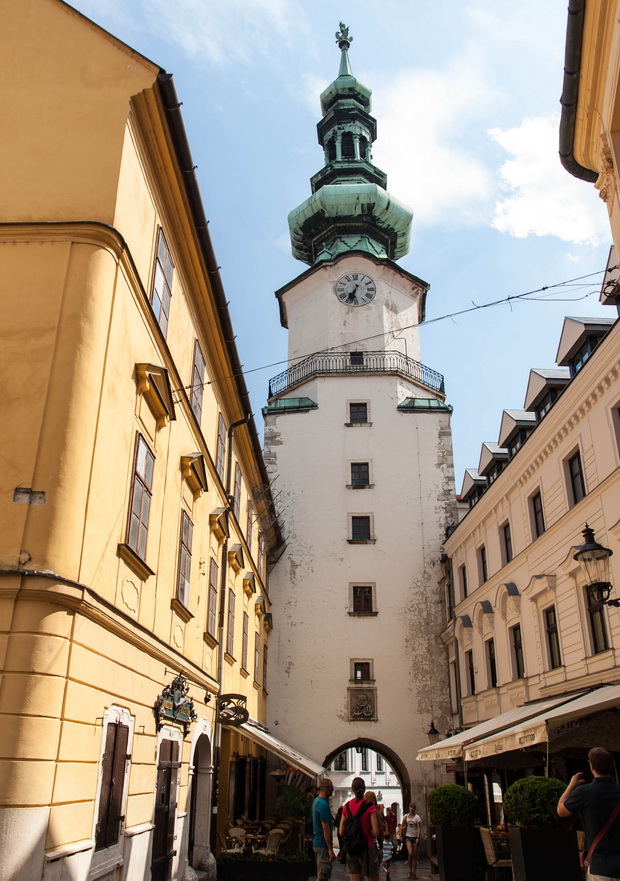
It marks the city center and at the base of the gate, there is a tray showing the distances to other capitals.
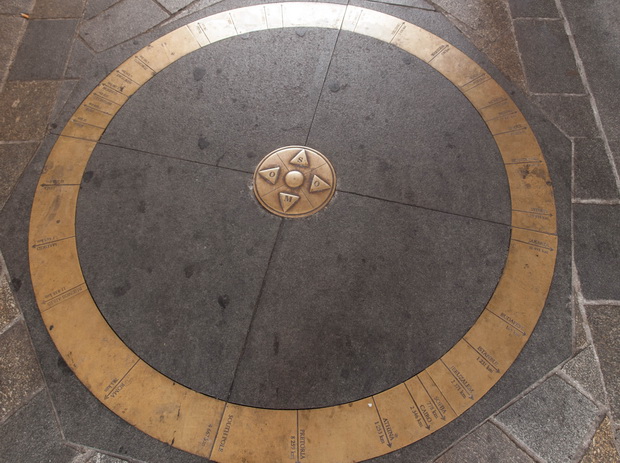
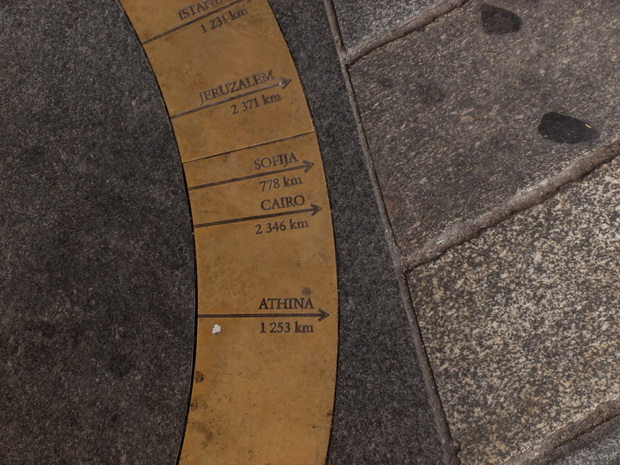
We stop for a coffee at the main square and then continue exploring the narrow streets of the old city.
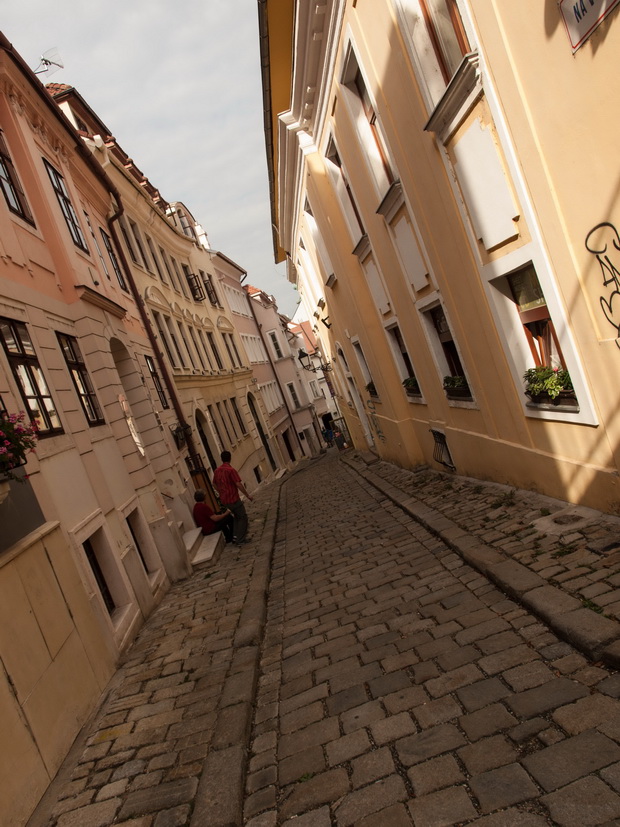
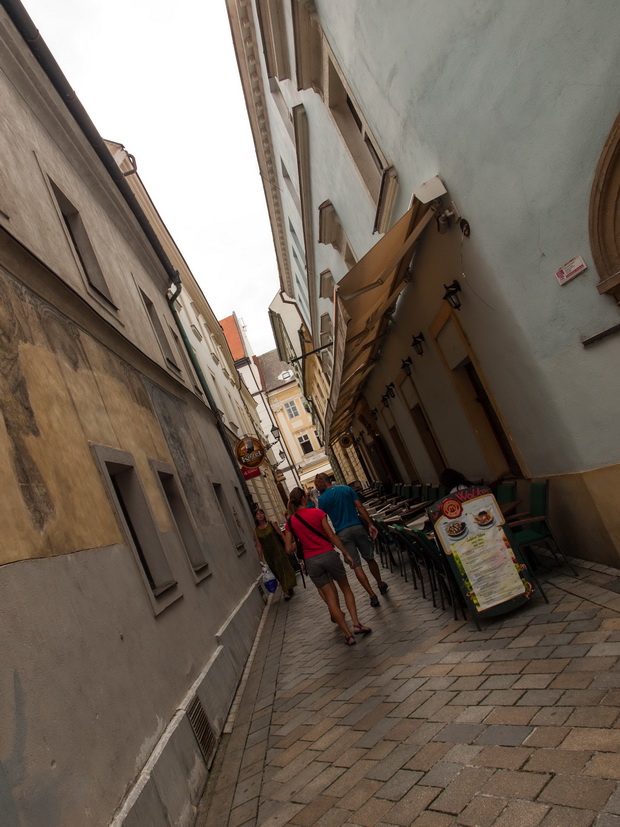
The image of the well preserved city ends just a few blocks away from the city center.
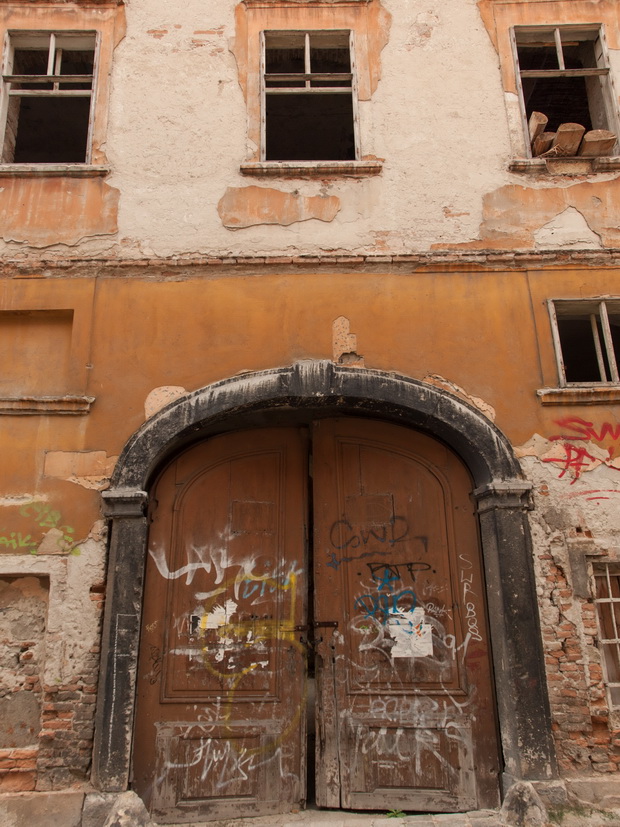
We continue to Hviezdoslav square where the new Renaissance Slovak National Theatre lies. It was built in 1886 under the Austro-Hungarian empire.
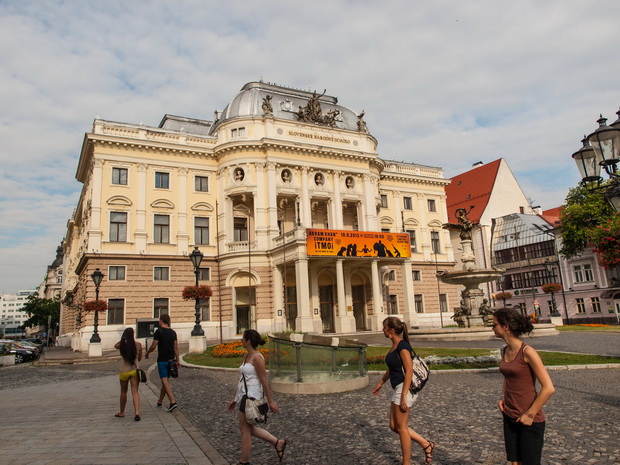
In front of the theater there is the fountain of Ganymede of Troy, designed by the local sculptor Victor Tilgner in 1888.
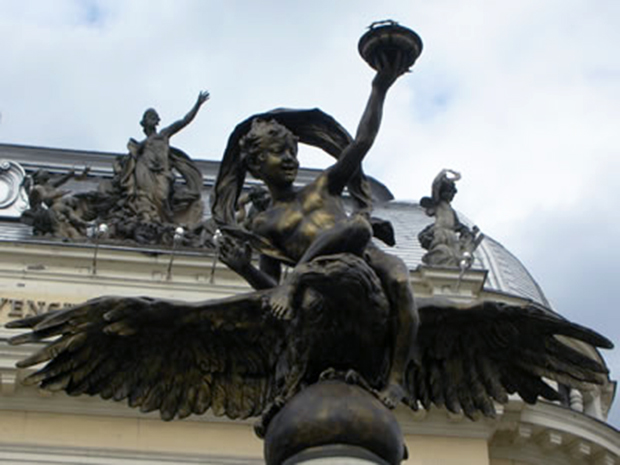
A beautiful walkway along Danube takes us to the most famous bridge in the city, the New Bridge (Novy Most).
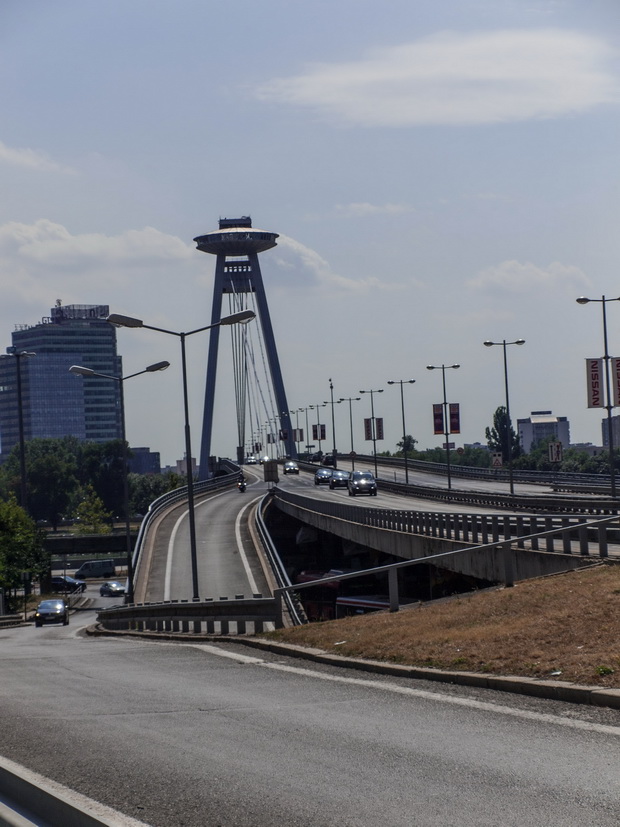
It is an asymmetrical cable-stayed bridge with a total length of 430.8m and 21m wide. A special attraction is the flying saucer-shaped structure, located at the east pillar and can be visited by using an elevator (the ticket costs 6.64€). The amazing view makes it worth paying …
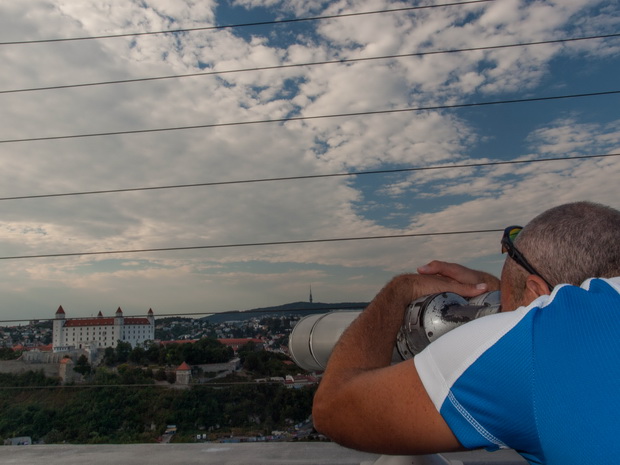
The flying saucer-shaped structure houses an overpriced restaurant. We take a sit in order to enjoy the sunset, choosing whatever is cheap on the menu (which also includes a water costing 85€!). After a short google search, I found that this water comes from Hollywood from some spring of Tennessee and the bottle is decorated with Swarovski crystals… Vanity of vanities… At least the sunset was really great.
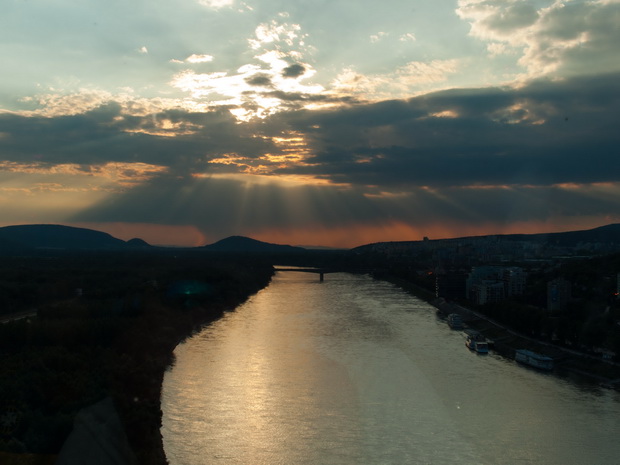
Back to the city center for dinner. We choose to eat at the restaurant Verdict. Good but expensive.
Afterwards we take a last night walk at the city.
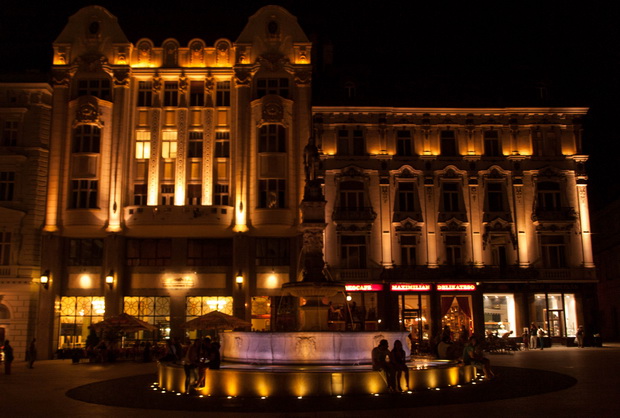
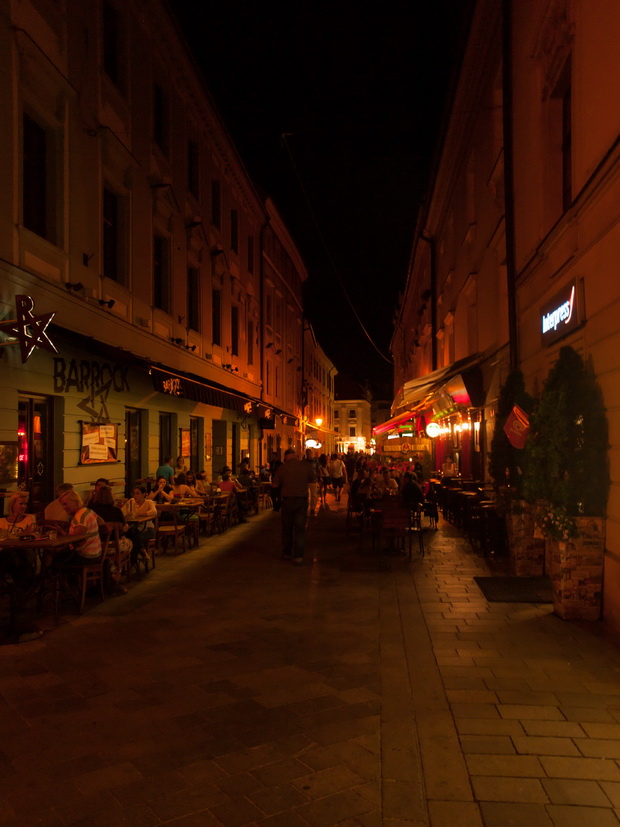
| « Previous Page | Next Page » |

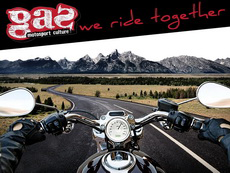

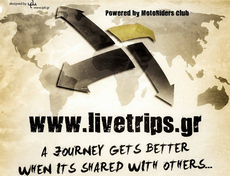


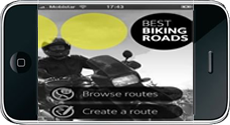
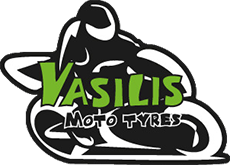

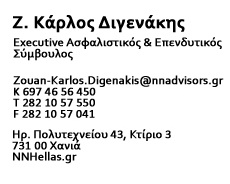
Μπραβο παιδια παντα τετοια ,
Ταξιδευω απο το 1992 με rd 350 στην αρχη fzr1000 ,hayabusa αργοτερα και απο περυσι t max500 yamaha.
Σας διαβαζω γιατι φετος θα ειναι η πρωτη φορα που θα περασω απο βαλκανια.
Λοιπον ας ειμαστε ολοι καλα να απολαμβανουμε αυτο το μοναδικο που σου κανει η μοτοσυκλετα , να σε κανει 18 χρονων με το που ξεκινας το ταξιδι
Ευχαριστούμε Χρήστο…
Είμαι σίγουρος πως θα περάσεις υπέροχα. Τα Βαλκάνια κρύβουν απίστευτες ομορφιές.
Οι μοτοσυκλέτες είναι “μηχανές του χρόνου” τελικά 😉
Πραγματικά πολύ όμορφο ταξιδιωτικό, φέτος είμασταν και εμείς στο περίπου!!! Το μόνο που έχω να πω σαν διευκόλυνση, αν δεν το έχετε κάνει ήδη, πιστεύω ότι είναι καλύτερα να πηγαίνεις μαυροβούνιο μέσω κοσόβου. Δηλαδη σκόπια, κόσοβο, μαυροβούνιο. Εχω πάει ήδη 2 φορές από αυτην την διαδρομή και με αυτά που βλέπω από αλβανία είναι πολύ καλύτερη από άποψη δρόμων. Δεν υπάρχει κανένας κίνδυνος, απλά βγάζεις μια ασφάλεια 15 ευρώ που ισχύει για 15 μέρες πριν μπεις στο κόσοβο, συνεχίζεις μεχρο ουροσεβατς και απο εκει αριστερα να περασεις τα σύνορα για μαυροβουνιο. Λιγα παραπάνω χλμ αλλα που βγαίνουν πιο εύκολα και πιο γρήγορα.
Έχεις δίκιο Γιώργο. Μαυροβούνιο – Κόσοβο – Σκόπια είναι πολύ πιο εύκολα. Εμείς επιλέξαμε Αλβανία γιατί θέλαμε να κάνουμε την ορεινή διαδρομή Kukes-Peshkopi, η οποία είναι κα-τα-πλη-κτι-κή, αλλά όλα τα περίχωρα είναι δράμα…
Όπως και να ‘χει, όλα είναι μια εμπειρία. Ταξίδι να είναι και όπου να’ ναι!
Καλούς δρόμους να ‘χουμε
ΠΟΛΥ ΚΑΛΟ ΚΑΙ ΑΝΑΛΥΤΙΚΟΤΑΤΟ.ΕΙΝΑΙ ΤΕΛΙΚΑ ΞΕΣΗΚΩΜΟΣ ΝΑ ΔΙΑΒΑΖΕΙ ΚΑΝΕΙΣ ΤΑ ΤΑΞΙΔΙΩΤΙΚΑ ΣΑΣ.ΤΟ ΚΑΛΟ ΕΙΝΑΙ ΝΑ ΕΧΕΙ ΠΟΚΙΛΙΑ ΤΟ ΤΑΞΙΔΙ ΚΑΙ ΑΥΤΟ ΕΙΧΕ ΣΥΝΔΙΑΣΜΟ ΟΛΩΝ(ΣΑΛΩΝΙΑ-ΑΛΩΝΙΑ).ΤΕΛΙΚΑ ΔΕΝ ΘΑ ΠΑΩ ΠΟΤΕ ΠΟΡΤΟΓΑΛΙΑ ΑΠ’ΟΤΙ ΦΑΙΝΕΤΕ…ΠΑΛΙ ΣΤΑ ΒΑΛΚΑΝΙΑ ΘΑ ΒΡΕΘΩ….
Να ‘σαι καλά Γιώργο. Τα Βαλκάνια όντως μας έλκουν σαν μαγνήτης. Έχουν κάτι το μαγικό που όλο μας κάνουν να στρέωουμε τις ρόδες μας προς τα εκεί. Ίσως είναι το ανεκμετάλευτο ακόμα παρθένο τοπίο που σε συνδιασμό με τους αυθαιντικούς ανθρώπους που δεν σε κοιτάνε σαν κομπόδεμα. Ένα είναι σίγουρο πάντως… Πως και οι δικές μου ρόδες σύντομα θα ξανατραβήξουν ξανά προς τις Βαλκανικές χώρες. Έχω κάνει 5-6 ταξίδια εκεί, αλλά έχω ακόμα πολλά να δω.
Πολλά ευχαριστώ & πολλά μπράβο στην παρέα!!
Να είστε καλά παιδιά!!Πάντα τέτοια!!
Να είστε γεροί να ταξιδεύετε!!
Ευχαριστώ για το χρόνο & την ενέργεια που δαπανήσατε για να το μοιραστείτε!!
Τέτοια ταξιδιωτικά αποτελούν πολύτιμο διάλλειμα & πηγή πληροφοριών για κάθε επίδοξο ταξιδιώτη.
Ευχαριστούμε Κωστή 😉